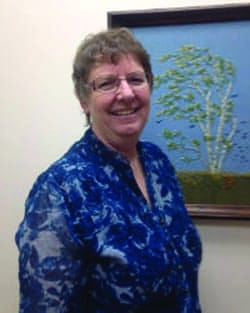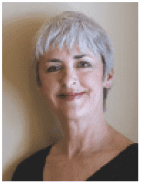Marketing a private practice requires making some important initial decisions that involve a baseline of values, and clear statements of how patients will be treated at your business.
When I first purchased my hearing care practice 25 years ago, one of the first things I developed was a motto, or slogan to live by. I settled on “Our Clients receive the Best Service in New England.” This is what I wanted my practice to be known for. I wanted that motto to shape how I made decisions about the way patients were treated, how I did my marketing campaigns, how I made financial decisions, and who I hired. This was the value baseline for me. I decided that my practice would be known for being relationship oriented. Creating relationships with clients, physicians, community leaders, and friends, local organizations such as the Rotary, Lions, and Kiwanis clubs, and other business owners would be key to my success.
Part One: Promoting Your Practice through Newspapers
I was fortunate that my secretary’s husband was the public relations director at Suffolk University. I asked him to write a press release for me to distribute for “May is Better Hearing Month.” I still use that press release every year since it is still relevant and effective. I have learned that the secret to a good press release is quoting yourself. Many practitioners assume that someone at the newspaper writes the press announcement, but that is not the case. You write it and submit it via email to the newspaper editors in the hope they will run it as a news item. The editor’s email addresses are usually listed on the newspaper’s websites or in a section in the paper.
A press release is a news announcement, not an advertisement, so it needs to be of general interest, about 100 words long, relevant, and timely. A published announcement will not include your phone and address. If your phone number or address are included, the article becomes an advertisement, and the paper will likely charge you. However, if you are quoting yourself in the release, you can state where you are from. For example, “More than 38 million Americans have hearing loss,” says Loleata Wigall from Atlantic Audiology Inc. “A sad fact is that most Americans do not get a hearing test to identify the loss.”

As a result of my monthly news release distributions, a local editor asked if I would be willing to write a periodic column. She promised to publish whenever I wrote it. The maximum word count was 400 words. I jumped at the chance, though for the first six months my column was very sporadic. At a business networking meeting I met the owner of another local newspaper. We got chatting and he commented on the column he had seen in the other paper. When he learned I was not being paid for the column, he told me that I could send it anywhere I wanted. “We would love to publish it too,” he told me. Now I had to get serious. Could I really produce a weekly column of 400 words? Were there enough topics to write about? Did I have the time? These were all good questions for the busy owner of a private practice.
While on vacation, my husband and I sat down with a glass of wine and my notebook. Together we started brainstorming ideas for columns. He is not an audiologist, but he is intimately involved in my life and knows audiology. We came up with 96 ideas in less than 30 minutes. I could more than a year’s worth of columns! I set a deadline for myself: Tuesday before noon I would email my column content to the newspapers. But why limit my readership to just local people? I spent hours trolling the internet looking for other newspapers and email addresses. Most local papers are owned by conglomerates that own papers around the country. And, editor’s email addresses are readily available on their websites. I added hundreds of names, email addresses, phone numbers, and addresses to my contact list. I labeled the contact list group “Lolly’s newspapers.” When I send off the column, I send it to everyone on that contact list by clicking on “Lolly’s newspapers” group, and I also email it to myself using BCC. When I send, I make sure not to let the recipients see the other contacts on the mail list. I do not want them to know how many papers I am sending it to, and I do not want others to scoop my list, nor do I want them to have access to the other’s email addresses.
Part Two: Promoting Your Practice through Email

I have changed my intake sheet in my practice to include email address. I believe that most people, no matter their age, have an email address. If they do not write it on the sheet, I ask at the end of the appointment. I promise not to spam them, and say I usually send out newsletters twice a year, and only email using BCC so no one else will get their email address. As a result of this, I have saved hundreds of dollars on printing and mailing my newsletters to patients. I will send an email blast to patients about holiday hours or bad weather. It is interesting that usually I receive emails back asking for an appointment or batteries to be mailed. Email is an inexpensive way to contact your patients. I never use it as a sales tool announcing a sale or special, but use it only to convey messages that are informational and educational. I will sometimes attach a column that I think my clients might find helpful.
Part Three: Promoting Your Practice to Physicians
The power of fax. Something I have done from day one upon opening my business was to fax to a patient’s physician a copy of the hearing test with just my notes on the bottom. I had learned long ago that physicians really only want “the bottom line” on any test. This made it very do-able to send any immediate report to the doctor. I created a list of physicians, their addresses, and phone and fax numbers from a big book that was printed every year. Now that big book has been replaced by the internet and the NPI Registry list (https://nppes.cms.hhs.gov/NPPESRegistry/NPIRegistryHome.do ). When I decided to use a web-based client database, I found I could input all of this data into one place. Using the NPI Registry website you can search by town, zip code, or physician name. You cannot search by specialty on the NPI list. However, if you look at each physician’s information, you can see their specialty. Be sure to check when the last update was done on the individual’s information. In my practice, we have found that many physicians have not updated their business addresses, phone and fax numbers when they change jobs. Ask your clients if they have a business card for their physician and update your database records. Or, if a fax fails, you know you need to call the office and get the correct information.

It might sound silly, but if I fax a copy of the audiogram, I am marketing to the physician’s staff as well. You never know what the story is with each employee at a physician’s office, and it may so happen that handling a faxed audiogram will encourage them to call for themselves or a family member who has hearing loss. By faxing audiograms to physicians, I am keeping helpful information flowing to the general public, which can also serve as a form of marketing outreach.
One thing I do monthly is to create a “one sheet”—a single document that reminds physicians that every 50-year-old should have a baseline hearing test, or that every oncology patient should be followed for evidence of hearing loss. The one sheet always includes something informational and educational. I fax the monthly one sheet to the nearly 2,000 physicians’ that I have in my database. I have been told that most practices have only 50 physicians in their database. My question is, “Why?” If my goal is to be educational, informative, and known for providing the best service, why wouldn’t I send the fax to every physician I can add to my database?
We use a fax blast service that eliminates duplicate fax numbers since there are many physicians in group practices. I do not want an office to receive five duplicate faxes, for example. Using a fax blast service also means they put a toll free number on the bottom of the page so recipients can “unsubscribe” without cost.
Years ago I attended a marketing seminar from which I took away several ideas, including the fact that in modern society our attention span is diminishing. Based on this insight, I decided that I could fax one idea to the physicians once a month. To do this, I use print that is extremely large and easily read from across the room. The one idea, printed on our business letterhead, is not sales oriented, but informational and educational.
Some of my “one idea” faxes have been: “Every patient needs a baseline hearing test by age 50,” “Every patient receiving chemotherapy needs a baseline hearing test,” “There are treatments for tinnitus. The first one is a hearing test,” “Seven Percent of American Teens have a hearing loss.”
What is the point of these faxes? Again, the point is to get my practice name in front of the medical community in an educational and informative way that is helpful, not pushy. It helps keep my practice name front of mind. It is to let the physicians know I am interested in educating. It is to encourage them to remember my practice and refer their patients for hearing tests.
The power of goodie bags. Calendars are great gifts to physicians. Everyone needs a calendar in the office, and I want my name on their wall for twelve months. I sort my database and see if I have three or more patients in common with a physician. In 2013, I had 193 physicians who had three or more patients in common. In 2014, I had 275 physicians who had three or more patients in common. This meant I sent out more calendars in 2014 than I did in 2013. That was an increased cost for me, but think how many more patients I saw from new physicians as a result of my marketing to them.
This past year I created a laminated sheet of information that I mailed to 400 doctors. The sheet was two sided. On one side I listed reasons for referring a patient for a hearing test. On the other side I listed symptoms of hearing loss. I laminated the sheets so they would be less likely to be thrown out and more likely to be useful in doctor’s offices. I sent two sheets to every office since I assumed there were more than two examining rooms at each office, and I wanted them to have one in each room as a reference.
I visited 150 physician’s offices delivering “goodie bags.” We printed small gift bags with our Atlantic Audiology logo. I delivered a goodie bag for each physician at the office, and one for the staff. In the physician’s goodie bag were special chocolates with my logo on them. Also included in the bags were my business cards, pens with my business name, practice brochures, and more laminated reference sheets. For the staff bags we used commercial chocolates, my business pens and cards, practice brochures. It was nice when staff members said, “Oh, it is so nice to meet you!” After all, they had been receiving faxed audiograms from my practice for years.
Part Four: Promoting Your Practice through Television and Radio
Years ago I was a yearly guest on a show hosted by the director of a local senior center. She had a weekly hour show where she interviewed guests. Over the years, I have been a guest on many cable shows. I have been interviewed by our local television station, as well as the local radio station, about new hearing aid technology.

The format of the show is an interview, whereby I have one guest at a time and we just talk for 30 minutes. In the background is my company name, and during the credits my address, phone number, and email address appear. My guest’s information also is shown. Most cable TV stations require a signed permission slip from the guest in order to play the show. This protects the station, so I make sure to get a signed permission slip from each guest. I have learned not to mention any dates or use the show to talk about upcoming events. This dates the show and the stations cannot use it as a filler in the future. The goal is for the show to be “evergreen” so it can be played at any time. Also, I’ve learned to wear close-toed shoes, regardless of the season, and to not wear any seasonal clothing such as Halloween earrings, or Christmas sweaters. It is best to dress neutrally so that it is not dated as a summer or winter show. This gives the stations more programming flexibility and, since the show is educational and informative, it can be shown over and over again. Personally, I do not care when the stations air the show, as it is a great vehicle for getting my name out to the general public at any time of year.
I recently had an experience of sitting in a store waiting my turn. A gentleman kept looking at me and finally said, “I know you from somewhere.” We began talking, trying to figure it out. We concluded that he had seen my show on his local cable station. His brother needed hearing aids so I gave him my business card. He put my information into his smart phone and sent a text to his brother while we continued to wait our turn.
Part Five: Promoting Your Practice through Newsletters
I write and distribute a newsletter twice a year. It is not hard to do, as it basically has the same information each time. So write it, save it in your documents, and edit for next year. Each issue includes one or two sentences about each staff member. The staff member tells me what they’d like me to say about them, but the general idea is that I want clients, physicians, and community leaders to know one personal thing about each staff member. This business is about relationships, and sharing one personal item with our readers allows people who visit our office to talk to the staff about their personal lives and interests.
Each issue has a list of holiday closings. The May issue, which is sent out in April, might have something about the latest hearing aid product. It also reminds readers to come in to have their hearing aids cleaned before hot and humid weather arrives. In October, we mail out the winter issue. Again, this issue includes something about each staff member, holiday closings, a reminder to get hearing aids cleaned before winter sets in, and something about new technology. This is my formula, and it is surprising that each time the newsletter is sent out via email and snail mail we get calls for cleanings. It gives us the opportunity to talk more about new technology or schedule hearing tests if patients have noticed a change. It gives us the opportunity to update their physician information, medical insurance, request their email address, and ask for referrals from them.
Part Six: Promoting Your Practice with Business Cards
A couple of years ago I gave two presentations at AAA. One of my topics was Marketing versus Advertising. I asked for a business card from each person attending the presentation. There were about 75 people attending, but only 25 of the attendees had business cards with them. At the end of the presentation, I drew a card from the collection 
I have been to many local seminars hosted by hearing aid manufacturers. Usually they involve food, either at lunch or at dinner. At mealtime, I try to sit with people I do not know. Particularly if the seminar or class is made up of local people, I want to meet them and get to know them, and vice versa. I can tell you that nine times out of ten, someone at the table does not have a business card with them. I always come to these events prepared to exchange business cards with other professionals in my area, so I have to say that I don’t get it. Why wouldn’t you have your business cards on you at all times? You just never know who you will meet, and where. There is always a possibility that you can share your business card with someone who might need your services. Owning a business means always marketing, and carrying your business cards with you at all times is an integral part of marketing your practice.
Correspondence can be addressed to Lolly Wigall at: [email protected]
Loleata Wigall, MS, CCC-A, FAAA, is president of Atlantic Audiology Inc, and author and host of the “Let’s Talk About Hearing! with Lolly Wigall” column and cable show.
Image credits: Lolly Wigall; © Micha360, Sorapop Udomsri, Vladimir Voronin, Phimchanok, Bacho12345 | Dreamstime.com







This list is fantastic. Comprehensive isn’t even the word, but you have done an amazing job outlining everything working for you. I have a new practice in North Carolina and have started several of these programs but you have inspired me to try a few more you’ve listed. Thanks so much for sharing!
Madison: Thanks for the comments. Send me an email ([email protected]) and we can talk about some other items you might want to try. Lolly